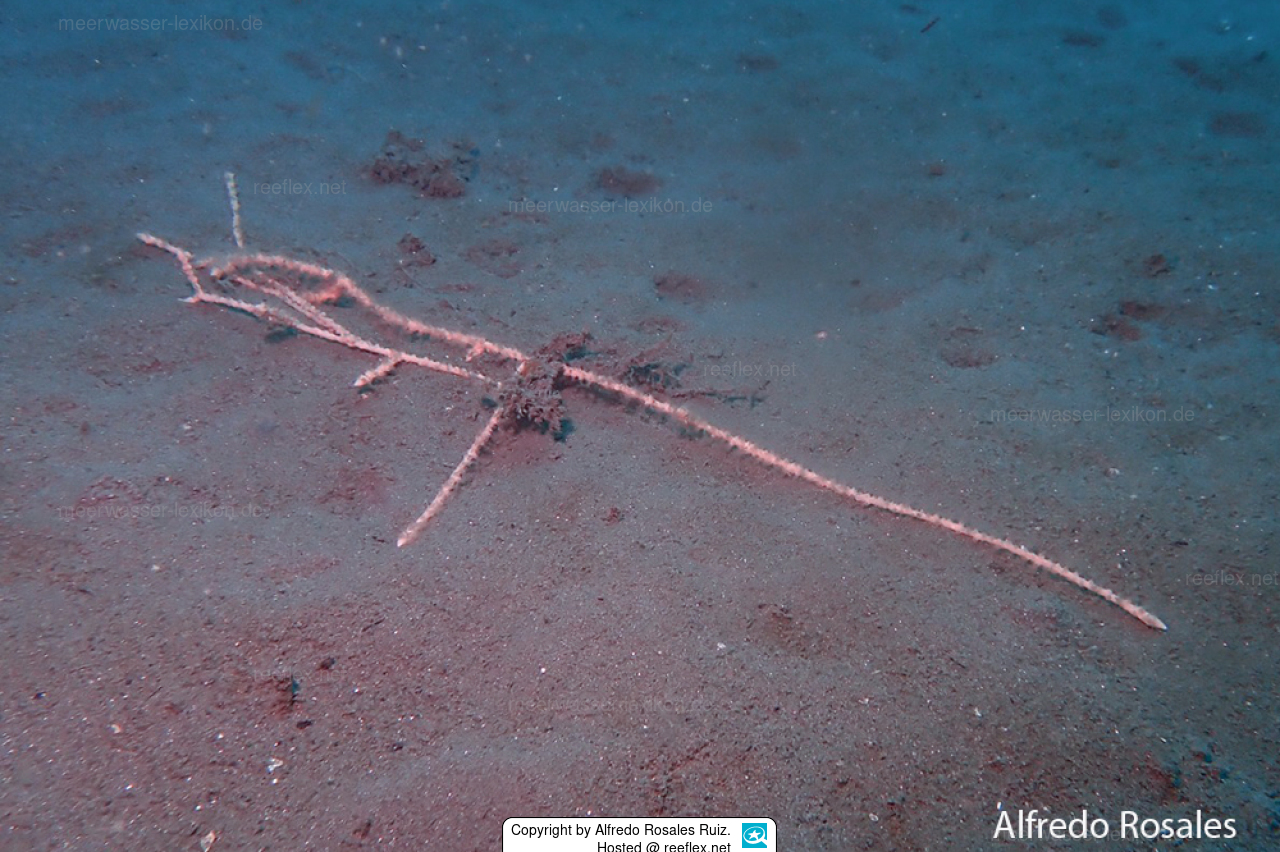Info
Eunicella filiformis forms thread-like colonies, sometimes branched and with a length of 50 cm - 73 cm.
The size specification of 73 cm comes from the first description of the species.
The colony is branched, planar, cable-like, thin, and flexible, hence the English name “Gorgonian cable.”
The slightly protruding calyxes of the polyps are striking.
This gorgonian develops freely on detrital sea floors and is therefore often landed by trawl fishermen.
Colour: Eunicella filiformis has a whitish colour.
Eunicella filiformis is often parasitized by the furrow foot Anamenia gorgonophila (Kowalevsky, 1880), a worm mollusk.
This gastropod also parasitizes the gorgonian Paramuricea macrospina (Koch, 1882).
Our special thanks for the rare photos of the gorgonian go to the doctoral student (Doctor of Philosophy (Ph.D.), Alfredo Rosales Ruiz, from the University of Granada, Spain.
Synonyms:
Eunicea filiformis Studer, 1878 · unaccepted > superseded combination (original combination)
Eunicella filiformis Studer, 1901 · unaccepted (incorrect authority date)
The size specification of 73 cm comes from the first description of the species.
The colony is branched, planar, cable-like, thin, and flexible, hence the English name “Gorgonian cable.”
The slightly protruding calyxes of the polyps are striking.
This gorgonian develops freely on detrital sea floors and is therefore often landed by trawl fishermen.
Colour: Eunicella filiformis has a whitish colour.
Eunicella filiformis is often parasitized by the furrow foot Anamenia gorgonophila (Kowalevsky, 1880), a worm mollusk.
This gastropod also parasitizes the gorgonian Paramuricea macrospina (Koch, 1882).
Our special thanks for the rare photos of the gorgonian go to the doctoral student (Doctor of Philosophy (Ph.D.), Alfredo Rosales Ruiz, from the University of Granada, Spain.
Synonyms:
Eunicea filiformis Studer, 1878 · unaccepted > superseded combination (original combination)
Eunicella filiformis Studer, 1901 · unaccepted (incorrect authority date)







 PhD Student Alfredo Rosales Ruiz, Spanien
PhD Student Alfredo Rosales Ruiz, Spanien












